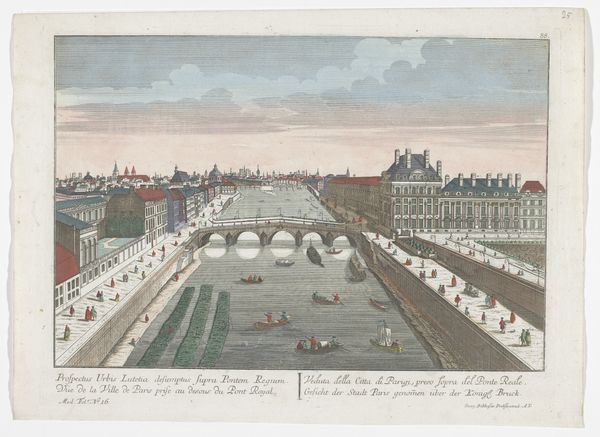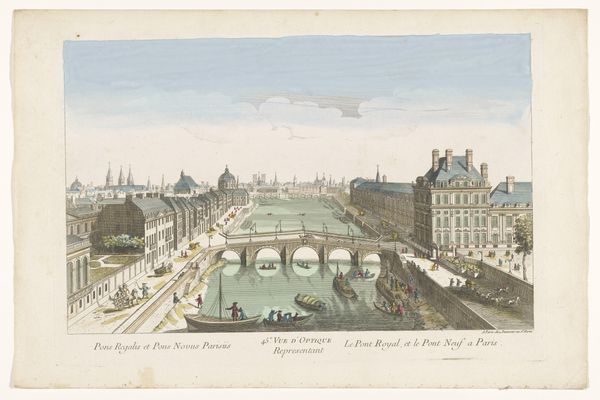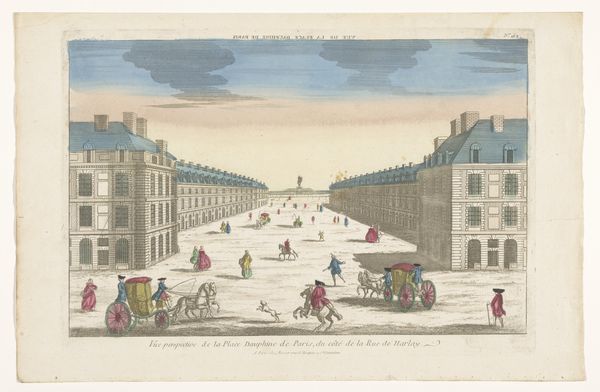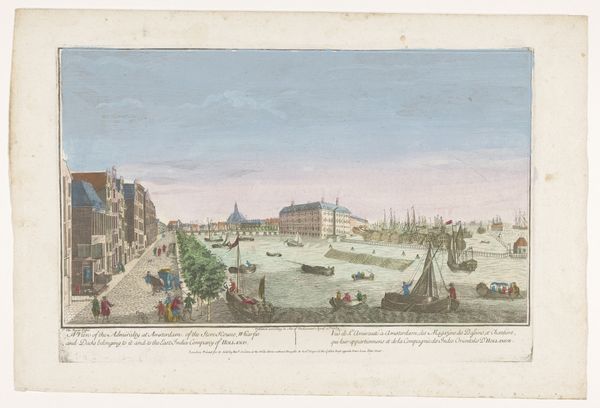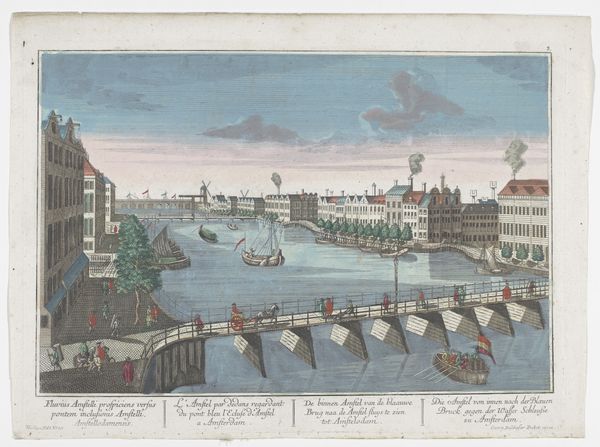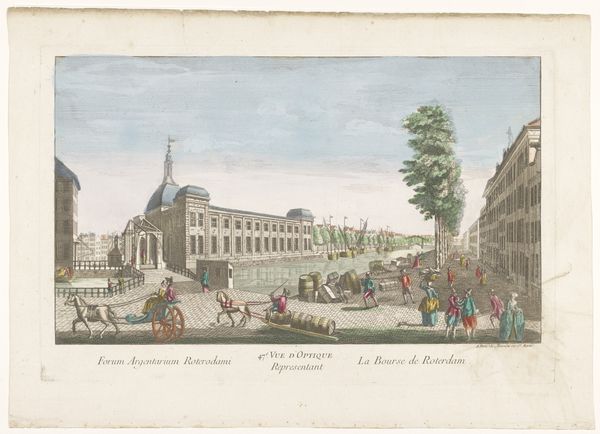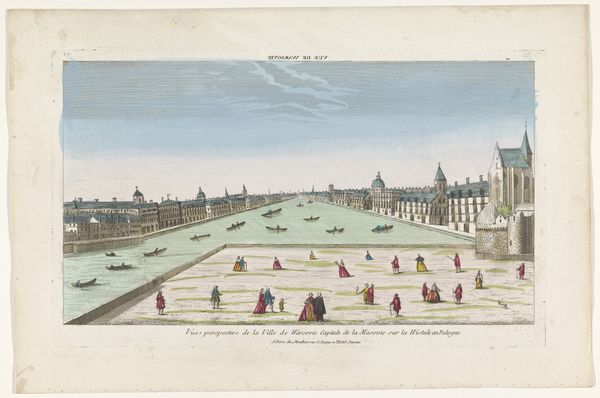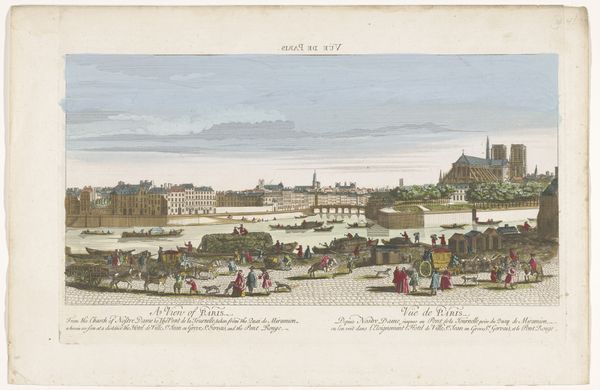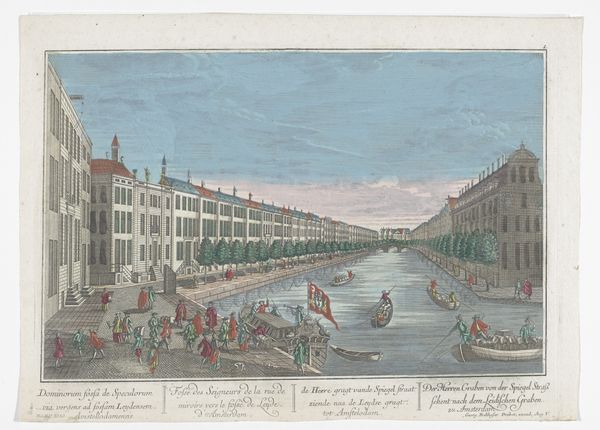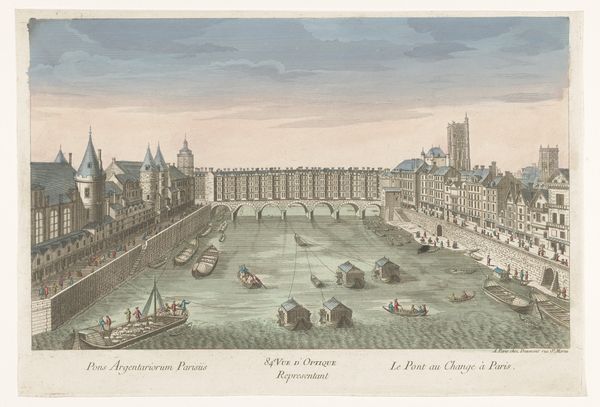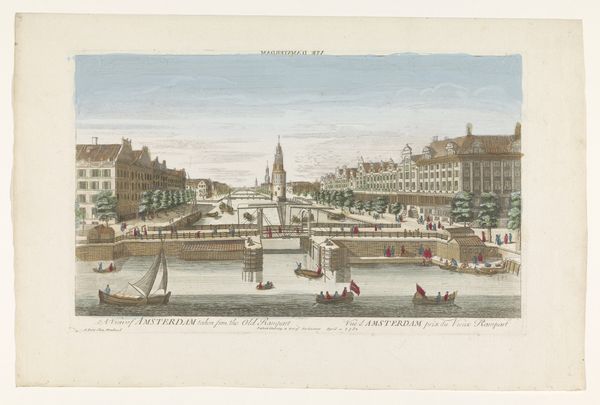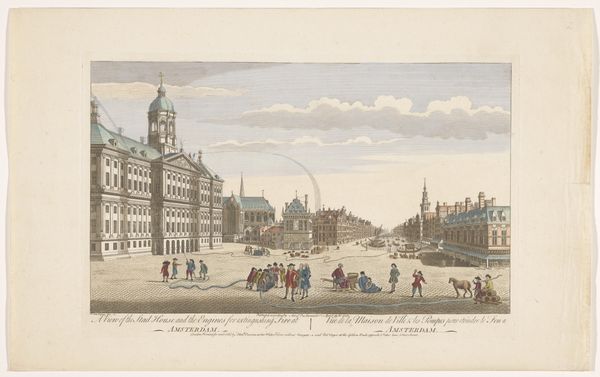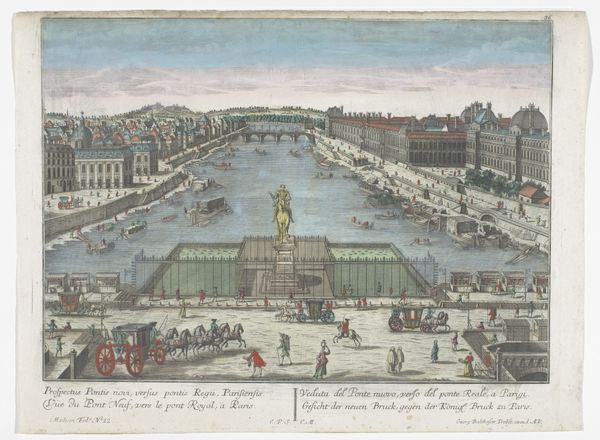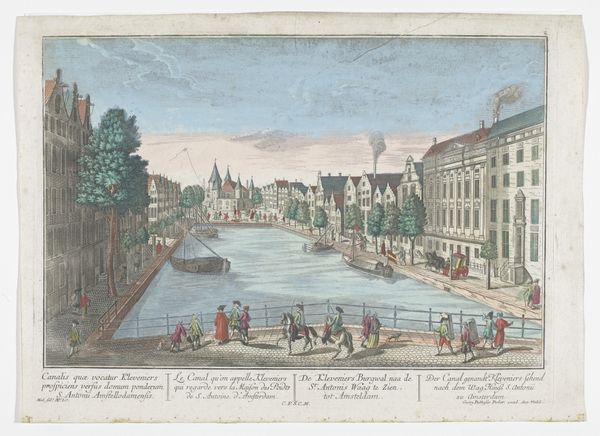
Gezicht op de Pont Marie en de Pont Rouge over de rivier de Seine te Parijs 1745 - 1775
0:00
0:00
painting, watercolor
#
painting
#
landscape
#
watercolor
#
15_18th-century
#
cityscape
#
genre-painting
#
rococo
Dimensions: height 294 mm, width 433 mm
Copyright: Rijks Museum: Open Domain
Curator: Jean-François Daumont invites us to gaze upon Paris in this work titled “Gezicht op de Pont Marie en de Pont Rouge over de rivier de Seine te Parijs," created sometime between 1745 and 1775, employing watercolor on paper. Editor: It's remarkably serene for a city scene. There's something so delicate in the rendering, a calmness washes over me looking at the Pont Marie as though time barely moves. It makes me want to pack up a lunch and laze there all day. Curator: That sense of stillness, I think, has much to do with Daumont's choice to portray the scene from a relatively high vantage point, providing that bird’s eye perspective. This period saw a real interest in documenting the burgeoning city, a move that served state power in lots of ways. You're right; though, there's something detached and peaceful, almost...dreamy...in this image of Paris. Editor: It's as though the city is laid out like a toy. The figures and boats feel carefully placed to add a lively atmosphere without overwhelming the pastel blues and greens, keeping it light, almost ephemeral. But I bet daily life at that moment, while painted so lovely here, was teeming with unrest for many people? Curator: Absolutely. While these images often presented the image of a harmonious society, and the growth of commerce and a burgeoning city were used as a show of strength for political elites, this was still a city rife with inequality. Genre painting like this offers glimpses, carefully curated, into aspects of 18th-century life in Paris and its economy and offers a public demonstration of culture that reinforces existing systems. Editor: It does make you wonder what Daumont leaves unseen. Does this delicate medium indicate anything about its significance, maybe the artwork catered to an elite clientele and tastes? I almost want to imagine another view of this same scene with a completely different treatment. Think heavy impasto to reflect grit! Curator: A fantastic contrast. While its delicate handling makes it easy to consume as visually pleasing, we might recognize its relationship to structures of social class and political expression, while acknowledging that images such as this helped cultivate popular identity. Thanks for pointing out its more insidious political implications! Editor: Always a pleasure! Let’s go get that picnic basket.
Comments
No comments
Be the first to comment and join the conversation on the ultimate creative platform.
